Small Hydropower Plant for Sustainable Electricity from RES Mix
Abstract
:1. Introduction
2. Materials and Methods
- OnGrid installation, located on ICSTM’s roof, three types of PV panels oriented south and an inclination of 45°; the installed capacity is 33.15 kWp, Figure 2a;
- OffGrid installation, located on ICSTM’s roof, two types of PV panels oriented south and an inclination of 30°; inverters and 100 batteries; the installed capacity is 42.5 kWp, Figure 2b;
- OffGrid installation of parasolar type; the installed capacity is 250 W, Figure 3;
- OffGrid installation of curtain type; the installed capacity is 8 kWp; 7 inverters of Victron Multiplus 5 kW, 2 inverters of Victron Multiplus 3 kW, and 100 VRLA Gel Deep Cycle 220 Ah and Victron VRLA Deep Cycle 220 Ah batteries, Figure 3;
- Fixed Tracker with two axes; the 25 m2 surface consists of 15 PV panels and 2 SMA SunnyBoy 2 kW inverters; the installed capacity is 4 kWp, Figure 3.
- A 20 kWp OnGrid installation on the ground formed by one Aeolos HAWT wind turbine with 10 kW installed capacity, horizontal axis, and a 24 m monopole; one Aeolos VAWT wind turbine with 10 kW installed capacity and vertical axis, 260 rpm, and an 18 m monopole; two ABB Wind inverters of 15 kW;
- A 3 kWp MagLev installation, vertical axis, located on ICSTM’s roof;
- A 2 kWp SmallWind installation formed by one Aeolos HAWT wind turbine, 1 kW installed capacity, horizontal axis, and one Aeolos HAWT wind turbine with 1 kW installed capacity, vertical axis.
- PV panels to supply electricity to ICSTM need batteries for electricity storage, which decrease the sustainability of the chosen solution;
- The proposed SHPP can be dimensioned at an installed flow near the value of the mean flow, which will ensure more than 4500 h/year;
- The turbine proposed to be installed in the SHPP can be chosen to function at a satisfactory efficiency for large range of flows; this will increase the annual operating time even more;
- The SHPP will constitute a new real-scale laboratory for UVT students, where so far there are no such facilities.
- A turbine installed in the section of the weir, arrangement between sections A and B, with turbines such as Voith Stream Diver (Koessler), WWS PowerGate (WWS Wasserkraft), Archimedean screw (as pump and as turbine, considering the demonstration possibilities for students and stakeholders), VLH (Very Low Head), and Archimedean Screw turbine;
- The powerhouse to be built close to the last step of the weir energy dissipator and with the evacuation of water from the turbine/s in this river section, arrangement between sections A and C, equipped with turbines such as Kaplan, Propeller, Crossflow (Banki), and Turbinator (CleanPower). In this arrangement, even the use of a pump as turbine (PAT) can be investigated.
3. Results
3.1. Hydropower Potential Assessment
- Free surface in the pond created by the weir: 283 masl;
- Free surface downstream energy dissipator teeth: 281 masl; it corresponds to a head between the free surface of the pond and this river section of 2 m;
- The distance between the weir crest (section A) and the end of the last raw of energy dissipator’s teeth (section B): 17 m; referred to as arrangement AB;
- Free surface of water in the last step of the energy dissipator (section C): 275 masl; it corresponds to a head between the two river sections of 8 m;
- The distance between the weir crest (section A) and the last step of energy dissipator (section C): 170 m; referred to as the arrangement AC.
- The hydraulic efficiency, , related to the hydraulic route between the pond and the turbine is usually imposed in the design phase to be at least 0.9;
- The turbine efficiency, , usually for small applications can be considered 0.8 (especially that we want to operate in a wide range of flows);
- The generator efficiency, , will be considered 0.95;
- The transformer efficiency, , will be considered 0.97.
3.2. SHPP Located in the Weir Section (Arrangement AB)
3.2.1. Voith Stream Diver
3.2.2. WWS PowerGate (WWS Wasserkraft)
3.2.3. Archimedean Screw
3.2.4. Very Low Head (VLH)
3.3. SHPP Located Close to the Last Step of the Weir Energy Dissipator (Arrangement AC)
3.3.1. Traditional Technology
3.3.2. Turbinator (CleanPower)
4. Discussion
5. Conclusions
Author Contributions
Funding
Acknowledgments
Conflicts of Interest
References
- Renewable Energy Directive. Available online: https://ec.europa.eu/energy/topics/renewable-energy/directive-targets-and-rules/renewable-energy-directive_en (accessed on 16 October 2021).
- Geem, W.G.; Kim, J.H. Optimal Energy Mix with Renewable Portfolio Standards in Korea. Sustainability 2016, 8, 423. [Google Scholar] [CrossRef] [Green Version]
- Inoue, M.; Genchi, Y.; Kudoh, Y. Evaluating the Potential of Variable Renewable Energy for a Balanced Isolated Grid: A Japanese Case Study. Sustainability 2017, 9, 119. [Google Scholar] [CrossRef] [Green Version]
- Szabo, S.; Kougias, I.; Moner-Girona, M.; Bodis, K. Sustainable Energy Portfolios for Small Island States. Sustainability 2015, 7, 12340–12358. [Google Scholar] [CrossRef] [Green Version]
- Flores-Arias, J.M.; Ciabattoni, L.; Monteriù, A.; Bellido-Outeiriño, F.J.; Escribano, A.; Palacios-Garcia, E.J. First Approach to a Holistic Tool for Assessing RES Investment Feasibility. Sustainability 2018, 7, 1153. [Google Scholar] [CrossRef] [Green Version]
- Alhumaid, Y.; Khan, K.; Alismail, F.; Khalid, M. Multi-Input Nonlinear Programming Based Deterministic Optimization Framework for Evaluating Microgrids with Optimal Renewable-Storage Energy Mix. Sustainability 2021, 13, 5878. [Google Scholar] [CrossRef]
- Manganelli, M.; Soldati, A.; Martirano, L.; Ramakrishna, S. Strategies for Improving the Sustainability of Data Centers via Energy Mix, Energy Conservation, and Circular Energy. Sustainability 2021, 13, 6114. [Google Scholar] [CrossRef]
- Mohamed, A.-A.A.; Ali, S.; Alkhalaf, S.; Senjyu, T.; Hemeida, A.M. Optimal Allocation of Hybrid Renewable Energy System by Multi-Objective Water Cycle Algorithm. Sustainability 2019, 11, 6550. [Google Scholar] [CrossRef] [Green Version]
- Rosa, C.; Costa, K.A.; Christo, E.D.S.; Bertahone, P.B. Complementarity of Hydro, Photovoltaic, and Wind Power in Rio de Janeiro State. Sustainability 2017, 9, 1130. [Google Scholar]
- Margeta, J.; Glasnovic, Z. Hybrid RES-HEP Systems Development. Water Resour. Manag. 2011, 25, 2219–2239. [Google Scholar] [CrossRef]
- Kouloumpis, V.; Kalogerakis, A.; Pavlidou, A.; Tsinarakis, G.; Arampatzis, G. Should Photovoltaics Stay at Home? Comparative Life Cycle Environmental Assessment on Roof-Mounted and Ground-Mounted Photovoltaics. Sustainability 2020, 12, 9120. [Google Scholar] [CrossRef]
- Takeda, S.; Keeley, A.R.; Sakurai, S.; Managi, S.; Norris, C.B. Are Renewables as Friendly to Humans as to the Environment?: A Social Life Cycle Assessment of Renewable Electricity. Sustainability 2019, 11, 1370. [Google Scholar] [CrossRef] [Green Version]
- Tian, Z.; Zhang, X.; Jin, X.; Zhou, X.; Si, B.; Shi, X. Towards adoption of building energy simulation and optimization forpassive building design: A survey and a review. Energy Build. 2018, 158, 1306–1316. [Google Scholar] [CrossRef]
- Lin, Y.; Zhao, L.; Yang, W.; Hao, X.; Li, C.-Q. A review on research and development of passive building in China. J. Build. Eng. 2021, 42, 102509. [Google Scholar] [CrossRef]
- Li, Y.; Gao, W.; Ruan, Y.; Ushifusa, Y. Grid Load Shifting and Performance Assessments of Residential Efficient Energy Technologies, a Case Study in Japan. Sustainability 2018, 10, 2117. [Google Scholar] [CrossRef] [Green Version]
- University Valahia of Târgoviște. Available online: https://www.valahia.ro/en/ (accessed on 16 October 2021).
- ICSTM. Available online: https://www.icstm.ro/ICSTM-equipment.pdf (accessed on 16 October 2021).
- Nedelcu, O.; Salisteanu, I.C.; Ivanovici, T.; Dogaru, V. Energy passivation of a building. The ICSTM building case study. In Proceedings of the 8th International Conference on Thermal Equipment, Renewable Energy and Rural Development (TE-RE-RD 2019), Targoviste, Romania, 6–8 June 2019. [Google Scholar]
- Popa, B.; Vuță, L.-I.; Popa, F.; Diminescu, M.; Tică, E.-I. Influence of Support Scheme on Electricity Production from RES in Romania. In Proceedings of the 18th International Multidisciplinary Scientific Geoconference, SGEM 2018, Albena, Bulgaria, 2–8 July 2018; Volume 18, pp. 417–424. [Google Scholar]
- Google Earth Pro. Available online: https://www.google.com/intl/ro/earth/versions/ (accessed on 16 October 2021).
- ARLG. Available online: https://www.limnology.ro/water2010/Proceedings/55.pdf (accessed on 16 October 2021).
- ESHA 2004. Guide on How to Develop a Small Hydropower Plant. Available online: https://workingthetweed.files.wordpress.com/2015/03/updated-guide-to-small-hydro.pdf (accessed on 16 October 2021).
- StreamDiver. Available online: https://voith.com/uk-en/hydropower-components/streamdiver.html (accessed on 16 October 2021).
- WWS-Powergate. Available online: https://www.wws-wasserkraft.at/en/products/wws-powergate (accessed on 16 October 2021).
- Archimedean Screw. Available online: http://www.renewablesfirst.co.uk/hydropower/hydropower-learning-centre/archimedean-screw-hydro-turbine (accessed on 16 October 2021).
- YoosefDoost, A.; Lubitz, W.D. Archimedes Screw Turbines: A Sustainable Development Solution for Green and Renewable Energy Generation—A Review of Potential and Design Procedures. Sustainability 2020, 12, 7352. [Google Scholar] [CrossRef]
- Screw Turbine. Available online: https://www.wikiwand.com/en/Screw_turbine (accessed on 16 October 2021).
- Very Low Head. Available online: https://www.vlh-turbine.com/ (accessed on 16 October 2021).
- Kemp, P.; Williams, C.; Sasseville, R.; Anderson, N. Very Low Head Turbine Deployment in Canada. In IOP Conference Series: Earth and Environmental Science; IOP Publishing: Bristol, UK, 2014; Volume 22. [Google Scholar]
- Turbinator. Available online: https://www.me.government.bg/files/useruploads/files/vop/clean_power.pdf (accessed on 16 October 2021).

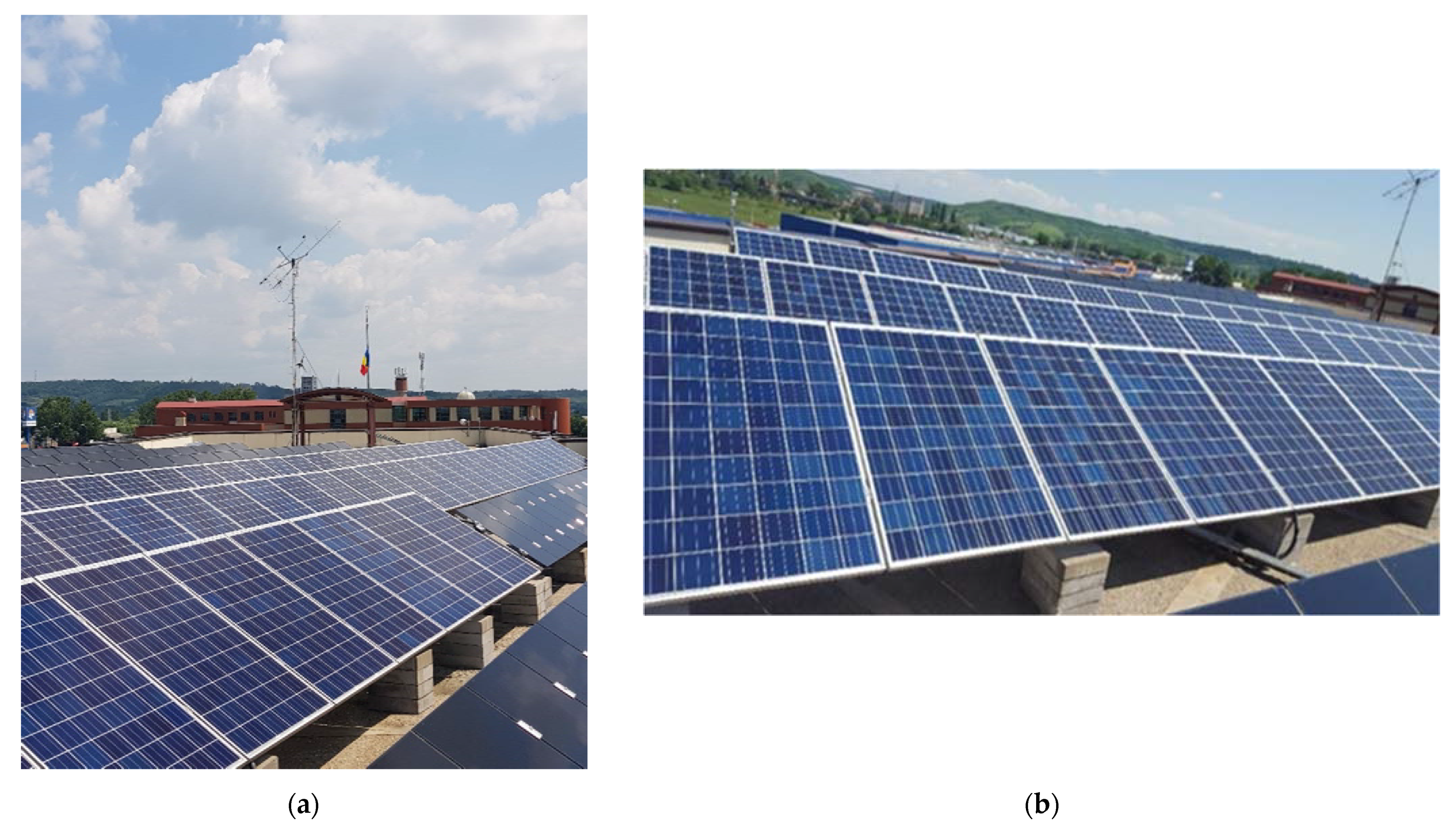

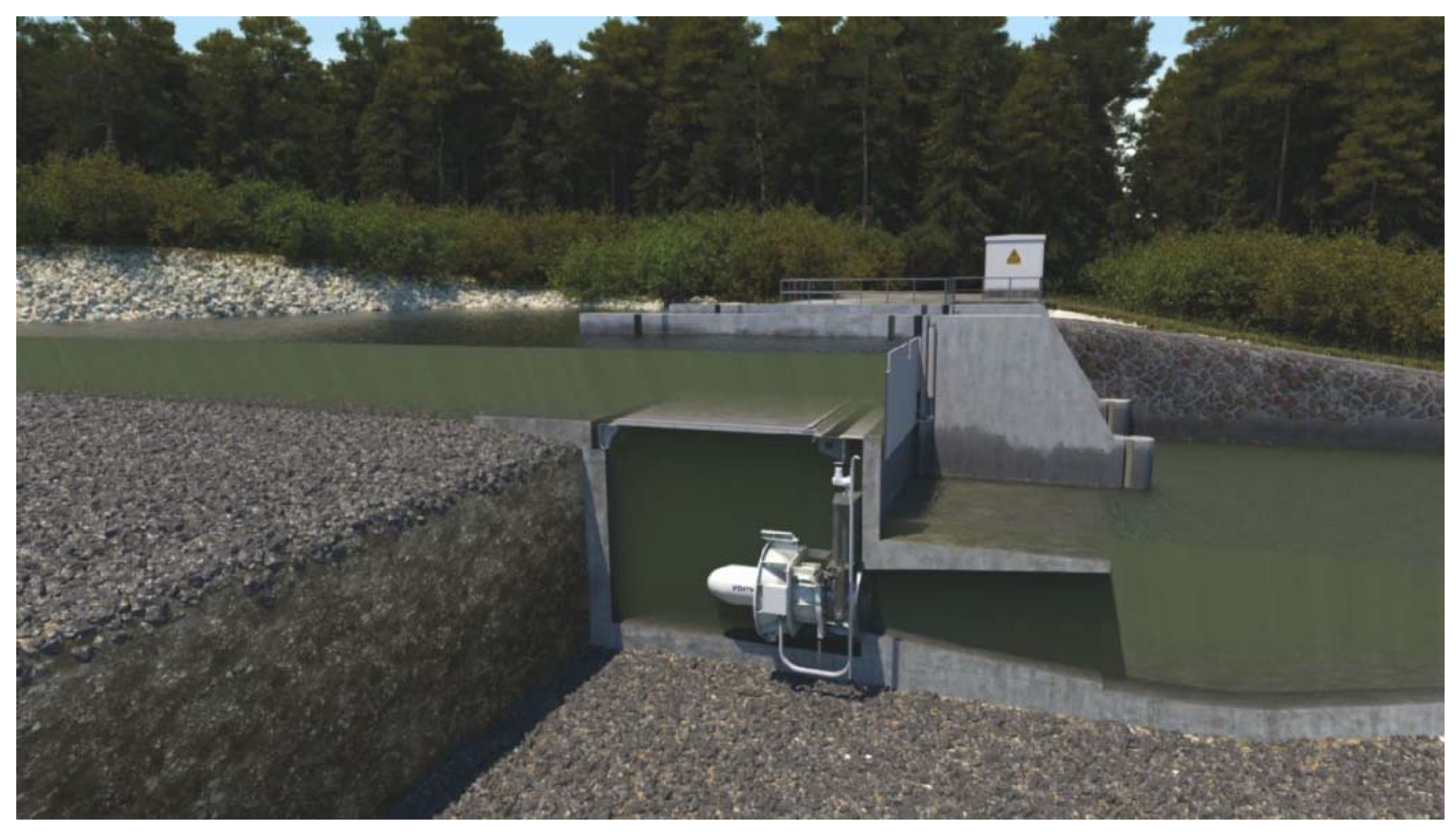

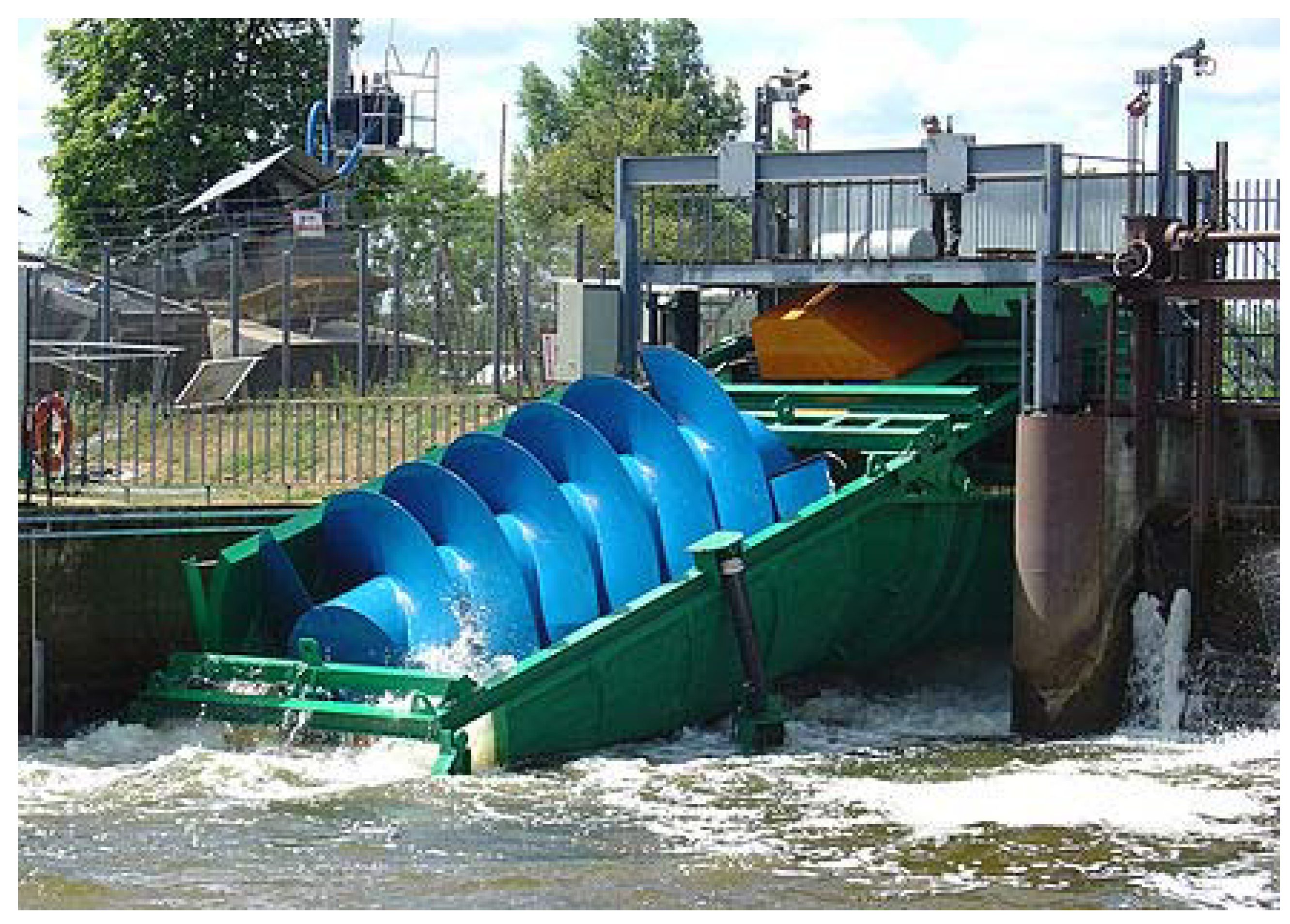
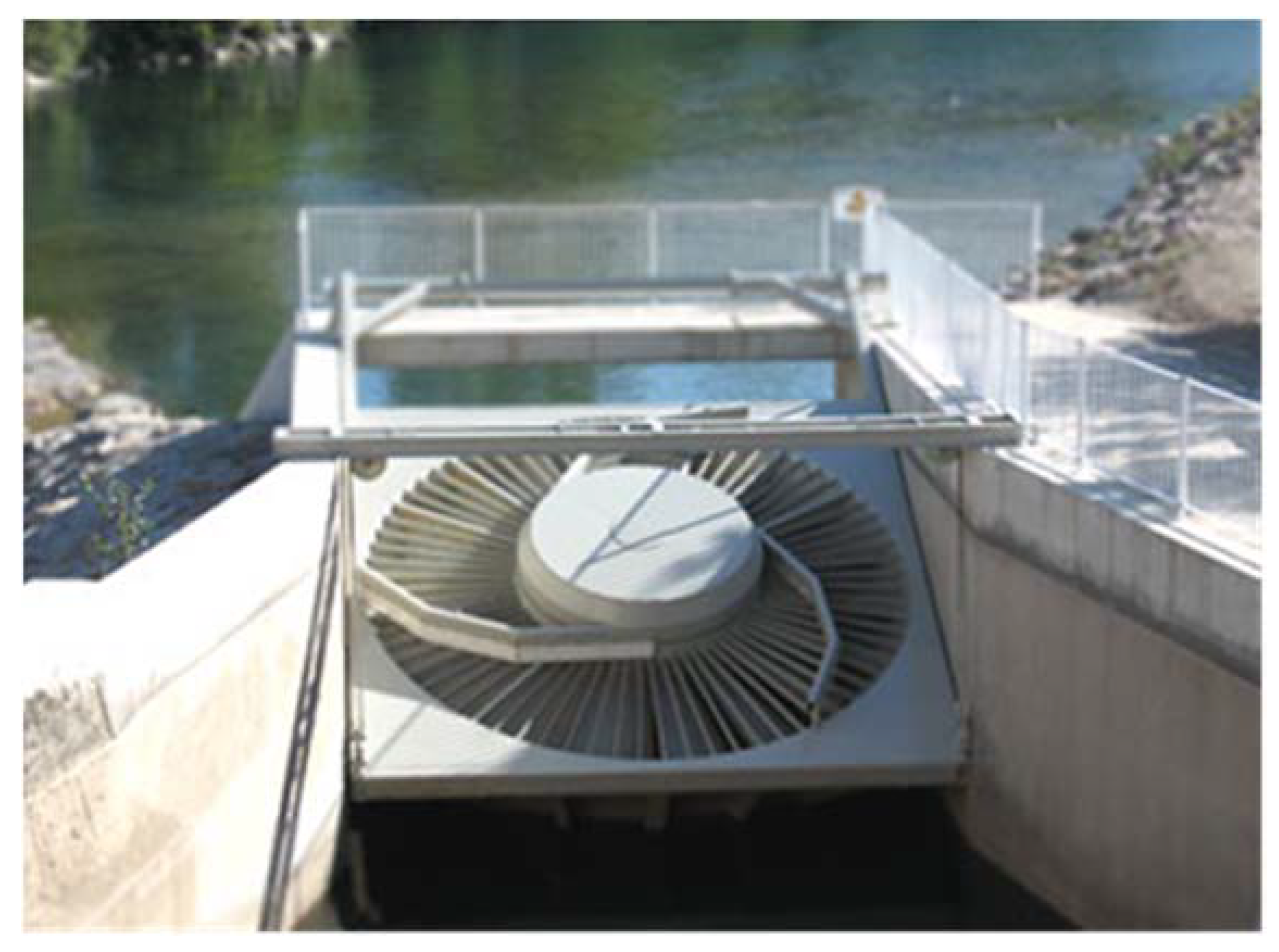

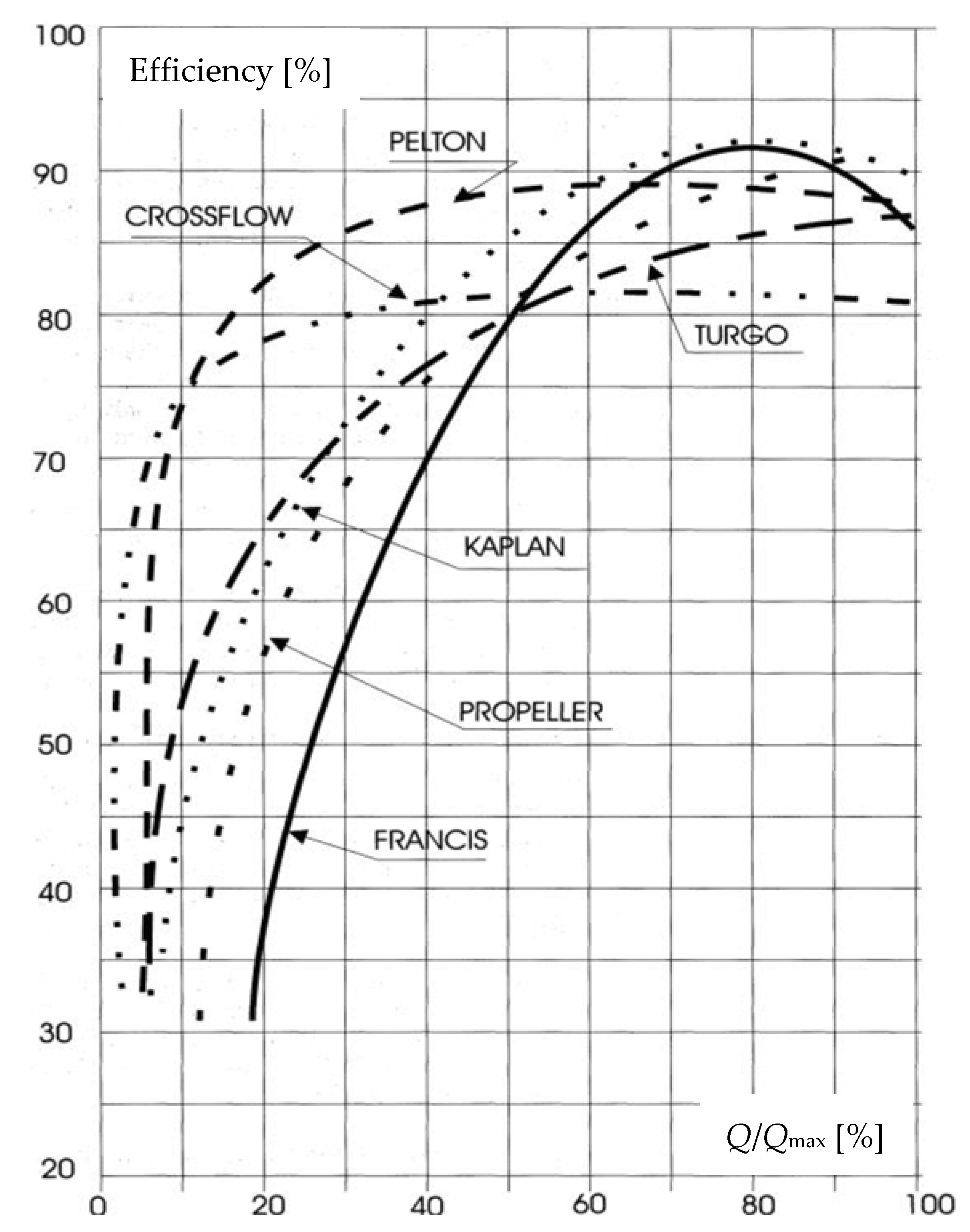
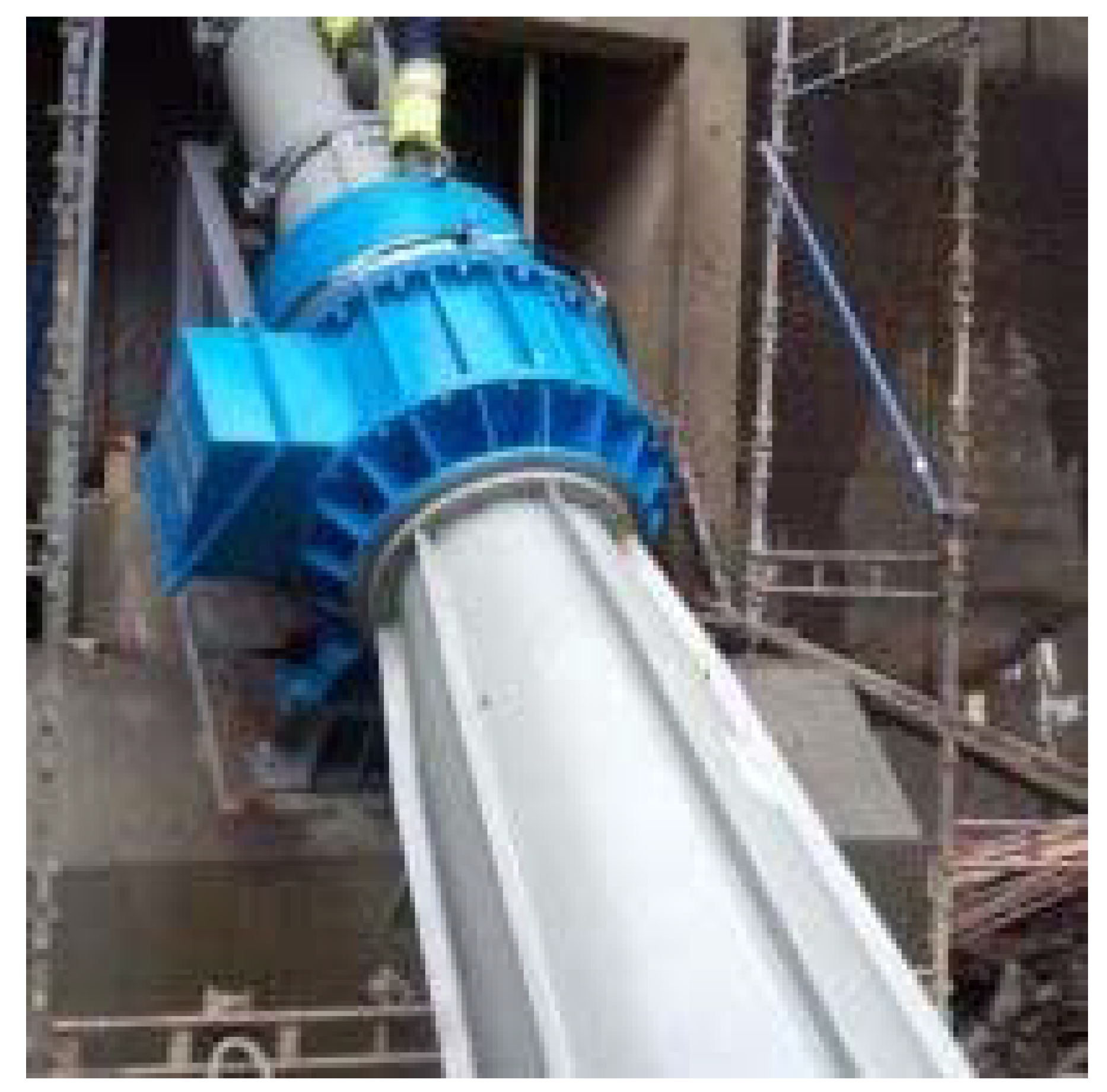
Publisher’s Note: MDPI stays neutral with regard to jurisdictional claims in published maps and institutional affiliations. |
© 2021 by the authors. Licensee MDPI, Basel, Switzerland. This article is an open access article distributed under the terms and conditions of the Creative Commons Attribution (CC BY) license (https://creativecommons.org/licenses/by/4.0/).
Share and Cite
Popa, B.; Nedelcu, O.; Popa, F.; Ahmad-Rashid, K.; Tică, E.-I. Small Hydropower Plant for Sustainable Electricity from RES Mix. Sustainability 2021, 13, 12402. https://doi.org/10.3390/su132212402
Popa B, Nedelcu O, Popa F, Ahmad-Rashid K, Tică E-I. Small Hydropower Plant for Sustainable Electricity from RES Mix. Sustainability. 2021; 13(22):12402. https://doi.org/10.3390/su132212402
Chicago/Turabian StylePopa, Bogdan, Otilia Nedelcu, Florica Popa, Khalid Ahmad-Rashid, and Eliza-Isabela Tică. 2021. "Small Hydropower Plant for Sustainable Electricity from RES Mix" Sustainability 13, no. 22: 12402. https://doi.org/10.3390/su132212402
APA StylePopa, B., Nedelcu, O., Popa, F., Ahmad-Rashid, K., & Tică, E.-I. (2021). Small Hydropower Plant for Sustainable Electricity from RES Mix. Sustainability, 13(22), 12402. https://doi.org/10.3390/su132212402






